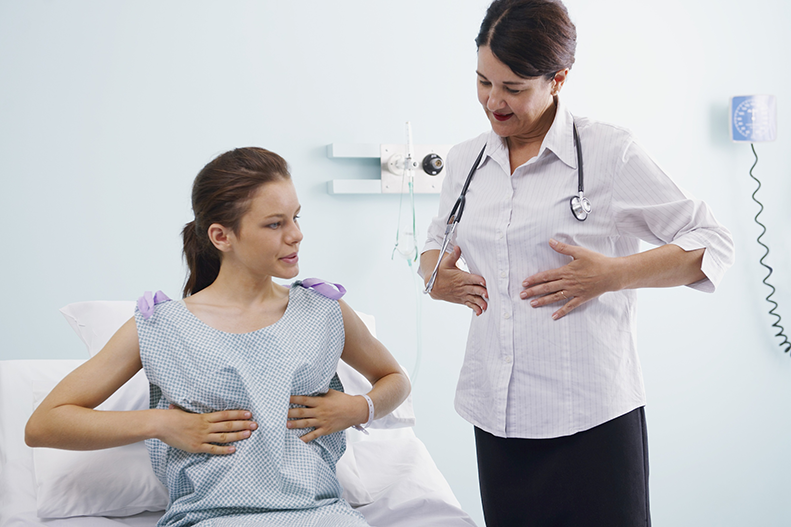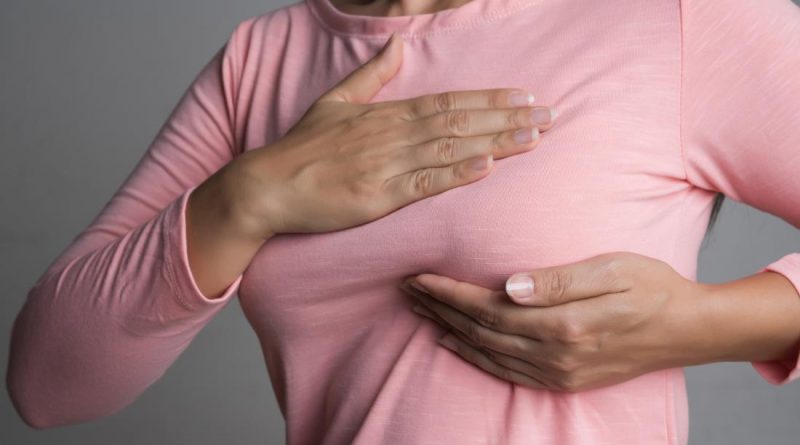Breast Self-Examination
Breast cancer is the commonest cancer of women in the world. In India, the incidence of breast cancer is increasing and it has become the leading cancer of women in major cities. While there have been tremendous advances in the treatment of breast cancer leading to excellent survival, any very effective and convenient approach to preventing breast cancer has not yet been identified. Detection of breast cancer at an early stage is however possible and effective in reducing deaths from breast cancer…….…
By Team Double Helical

Early detection of breast cancer can be achieved by three approaches: breast self-examination, check up by a doctor and mammography. Breast self- examination means examination of breasts done by the woman herself. A woman is the first person to know and feel the changes happening in her breasts. BSE is an essential part of taking care of oneself. Breast self- examination is the simplest and the cheapest screening test which can be carried out by every woman, in the privacy of her home.
It is advisable to carefully learn and practice the various steps of breast self- examination so that you are aware of normal feel of your breasts.With regular self-examination, you will be more familiar with the normal and it will become easier for you to know if something unusual has occurred. Any new change you observe or feel should be brought to the notice of your breast surgeon.
Throughout a woman’s life, various changes occur in her breasts. At the onset of puberty, the breasts start gradually growing in size to attain adult size. There can be minor differences in size and shapeof the two breasts. During pregnancy and lactation, the breast size again increases. During each phase of menstrual cycle certain changes occur in female breasts.Near the menstrual phase, breasts can feel lumpy, painful/tender or sore to touch. After menopause again, there are changes in breast size. Breasts can feel much softer after menopause due to more fat in them.
What is the best time to do BSE?
The best time to do breast self- examination is one week after the last day of periods. For ladies who are pregnant and those who have attained menopause, it is advisable to mark same date each month on the calendar to conduct this examination.
Who should do BSE?
Every woman above the age of 18 years should do BSE every month.
How should BSE be done?
You should know correct way of doing BSE. It should be carried out in step wise manner as described below.
 Step 1
Step 1
Begin by looking at your breasts in the mirror with your shoulders straight and your arms on your hips.
Here is what you should look for: Size, shape, skin colour, position of nipple, skin ulcer, rash/scaly skin of nipple or areola
- Lump, firmness or thickening
- Swelling, redness of breast skin
- Change in the size or shape of breast
- Dimpling, puckering or bulging of the breast skin
- Itchy, scaly sore or rash on the nipple/areola
- Inversion/pulling in of your nipple (Nipple retraction) instead of sticking out
- Nipple discharge especially dark brown and bloody
Compare both breasts visually for any new asymmetrical change

 Step 2
Step 2
A: Raise your arms and look for the same changes.
While you are looking at the mirror, gently squeeze each nipple between your finger and thumb and check for nipple discharge. If there is any discharge, look for the colour of discharge
Is it milky,clear yellow, dirty greenish, dark brown or blood?
Is it coming from a single opening or multiple openings?
Step 2
Now, rest your palms on your hips and press down firmly while holding the shoulders back so that your chestmuscles are flexed. Check for any changes in appearance. During each of these four steps you should rotate yourupper body from side to side. By regular inspection you will see what is normal for you. Now bend forward with your hands still on your hips and observe again.
 Step 3
Step 3
Feel your breasts while lying down, using your right hand to feel your left breast and then your left hand to feel your right breast. Use a firm, smooth touch with the fingers of your hand, keeping the fingers flat and together. Do not use the tips of your fingers; rather use the flat of the hand. Do not pinch breast tissue between thumb and fingers. Use a soft pillow under your shoulder and back. This is the most comfortable position for examining your breast.
Feel the entire breast from top to bottom and side to side—from your collarbone to the top of your abdomen, and from your armpit to the central breast bone.
 Step 4
Step 4
Finally, feel your breasts while you are standing or sitting. The easiest way to feel your breasts is when the skin is wet and slippery, that is when you are in the shower or having bath. Feel your entire breast, using the same hand movements described in Step 3
Circular pattern or grid pattern of palpation of breast
What to do for abnormal findings?
Do not panic if you think you feel a lump. Most women have some lumps or lumpy areas in their breasts all the time. The upper, outer area(area near your armpit) tends to have the most prominent lumps compared to the lower half of your breast. The area under the nipple can also feel granular.
What is important is that you get to know how and what to look for and how to feelvarious parts of the breast. Does something stand out as different from the rest? Has anything changed? Bring to the attention of your doctor any changes in your breasts that last over a full month’s cycle OR seem to get worse or more obvious over time.
You can record the findings your breast self-examination. This can be like a small map of your breasts, with notes about where you feel lumps or irregularities. Especially in the beginning, this may help you remember, from month to month, what is “normal” for your breasts. It is not unusual for lumps to appear at certain times of the month, but then disappear, as your body changes with the menstrual cycle (if you are still menstruating). Only changes that last beyond one full cycle, or seem to get bigger or more prominent in some way, need your doctor’s attention.

